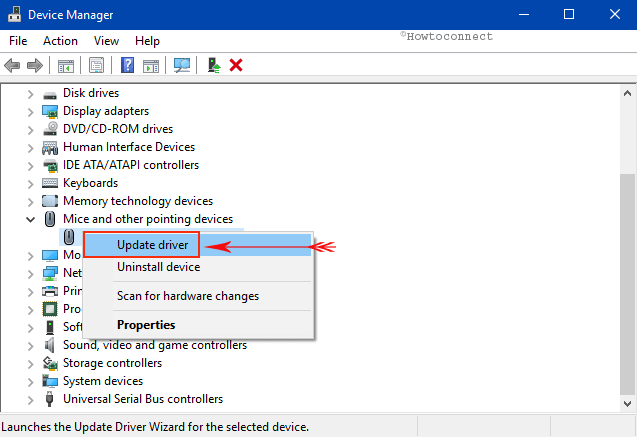
- Asus precision touchpad driver full#
- Asus precision touchpad driver pro#
- Asus precision touchpad driver Bluetooth#
Asus precision touchpad driver pro#
But it’s not as far ahead of the pack as I expected, with the Asus Vivobook Pro 16X OLED coming in reasonably close behind thanks to its AMD Ryzen 9 5900HX CPU, especially in the multi-core portion of the test. It did very well in Geekbench 5, earning the highest score for a laptop in our review database. The ThinkPad P15 is fast, but it’s not as dominant as you might expect. The ThinkPad P15 has the components and the thermal design to blow those laptops out of the water. We’ve reviewed several laptops recently aimed at creators, but those have been in the usual consumer-focused thin-and-light class. With all that upgradability, the ThinkPad P15 promises incredible performance for demanding creative tasks. The laptop can be configured with up to 128GB of RAM, 6TB of SSD storage, and a UHD (3,840 x 2,160) OLED panel.
Asus precision touchpad driver full#
As configured at retailer CDW, the ThinkPad P15 I reviewed costs a whopping $5,445 - scary when you consider my review unit has “only” 32GB of RAM, a 1TB solid-state drive (SSD), and a lowly 15.6-inch Full HD (1,920 x 1,080) display.
Asus precision touchpad driver Bluetooth#
Wi-Fi 6E and Bluetooth 5.2 provide wireless connectivity. On the right-hand side is a USB-A 3.2 Gen 1 port, a full-size SD card reader (which creators will appreciate), and an optional Smart Card reader.įinally, in the back is an Ethernet port, a connection for the 230-watt power adapter, two USB-C ports with Thunderbolt 4 support, and a USB-C 3.2 Gen 2 port.

On the left-hand side is a full-size HDMI 2.1 port, a USB-A 3.2 Gen 1 port, a nano-SIM slot for optional 4G WWAN support, and a 3.5mm audio jack. Of course, it passed through Lenovo’s usual MIL-STD 810G testing, which provides some extra confidence.Ĭonnectivity is a strength, as you’d imagine with this class of machines (and given all the room to fit connections). The ThinkPad P15 isn’t quite up to the standards of the ThinkPad X1 Extreme Gen 4 or the XPS 15, but it feels durable enough. The lid is made of plastic and glass fiber, and it’s a bit more flexible than I like to see. The keyboard deck and bottom chassis feel quite sturdy. An internal magnesium frame holds the bottom chassis together, with a plastic and glass-fiber material covering it to provide extra protection and that soft touch. In terms of its durability, the ThinkPad P15 is close to the usual ThinkPad standards. You simply can’t pack all of that into a thin-and-light machine, and the ThinkPad P15 isn’t meant to be used by road warriors. And, the laptop can be upgraded by the user, meaning you can start with 64GB of RAM, for example, and a single SSD, and then add two 32GB RAM modules for 128GB of RAM and another SSD or two for more storage. There are also three SSD slots packed away inside - one PCIe 4.0 and the other two PCIe 3.0 - supporting up to 16TB of storage. You can configure up to 128GB of RAM via four SO-DIMM slots (and you can select error-correcting RAM for sensitive applications), which will make power-user creative types happy. In fact, that expandability is what sets this laptop apart the most. Instead, it’s meant to offer plenty of room inside to move air around and keep things cool and fast, along with providing extra expandability. The ThinkPad P15 is a workstation-class laptop and doesn’t pretend to be a highly portable, relatively fast laptop like the ThinkPad X1 Extreme or the Dell XPS 15. Not that there’s anything wrong with any of this. It’s a little comical to set the two side by side - they’re almost identical in width and depth, and they have similar appearances, but the ThinkPad P15 looks like a balloon version that someone pumped up with extra air.

I thought the ThinkPad X1 Extreme Gen 4 was a little larger than it should be, but the ThinkPad P15 dwarfs its 0.70-inch thickness and 3.99 pounds. It’s 0.96 inches at its thinnest point and 1.24 inches at its thickest, and it weighs 6.32 pounds. Where modern ThinkPads, at least the more premium consumer and business models, are thin and light, the ThinkPad P15 is just huge. Oh, that, and the massive bezels around the display that look like the ones you’d find on a laptop from 10 years ago. The most prominent difference in look and feel from the typical ThinkPad is in the extra venting along the sides and back, which hints at the ThinkPad P15 being different. There’s also the same soft-touch surface and the usual red TrackPoint nubbin in the center of the keyboard. There’s the usual black aesthetic with just a few hints of red, including the iconic LED “i” in the ThinkPad logo on the lid. The ThinkPad P15 looks exactly like a ThinkPad should - only it’s incredibly thick and heavy. Jump to: Design | Performance | Display | Keyboard and touchpad | Battery life | Our take Design


 0 kommentar(er)
0 kommentar(er)
